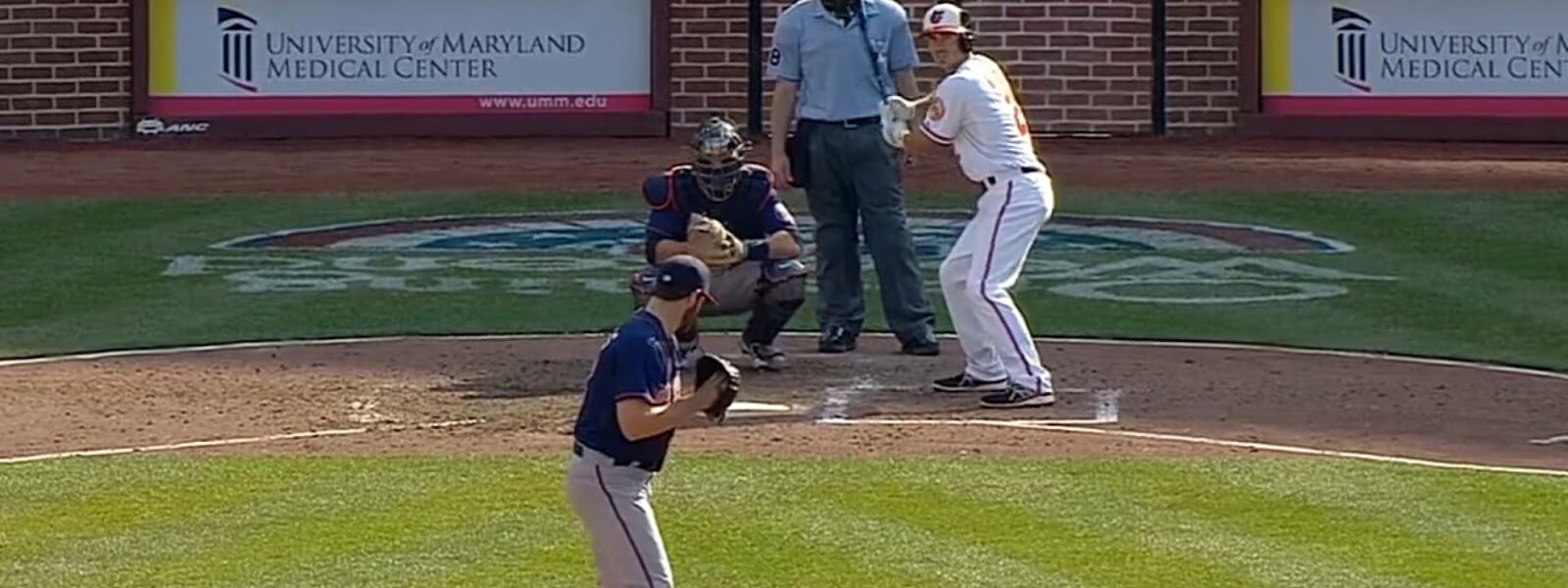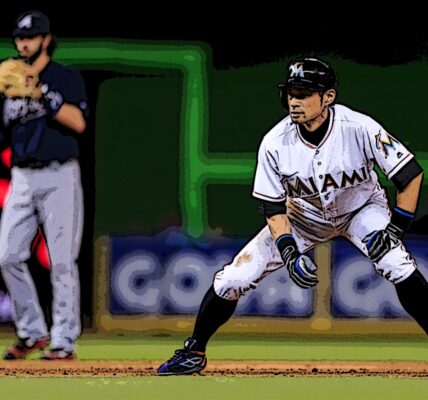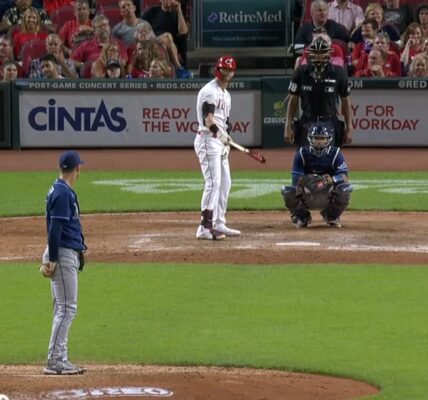In the realm of baseball, there exists a play known as “Fielder’s Choice.” This term refers to a scenario where a fielder, upon receiving the ball, is faced with multiple options to record an out. The choice they make often involves sacrificing an out on one player to allow another runner to advance to a different base. Typically executed by infielders, this play is a critical element in the strategic gameplay and scoring of baseball. This article aims to delve into the intricacies of Fielder’s Choice and its significance in the broader context of the sport.
The Mechanics of Fielder’s Choice
A classic instance of Fielder’s Choice arises when a defensive player intercepts a ground ball and is confronted with the decision of which opponent to eliminate from play. The uniqueness of this situation lies in the fact that the fielder can only secure an out on one of the runners. If the play results in the dismissal of both runners, it transitions into a double play. However, if only one runner is out while the other safely reaches a base, it is classified as a Fielder’s Choice. The batter, in this scenario, is not accredited with a hit, as the scorer concludes that their safe advancement is solely due to the fielder’s decision not to target them.
Here is a table that summarizes the different outcomes in a classic Fielder’s Choice scenario:
| Scenario | Outcome | Classification | Note |
|---|---|---|---|
| Fielder intercepts a ground ball | Decides which runner to target for an out | Initial Decision | Strategic choice depending on game situation, runner positions, and fielder’s judgment |
| One runner is put out, other reaches base | Only one out is recorded | Fielder’s Choice (FC) | Batter is not credited with a hit; play is due to fielder’s choice |
| Both runners are put out | Two outs are recorded | Double Play | A more advantageous outcome for the fielding team, eliminating two offensive players |
| No runners are put out | No outs are recorded | Failed Fielder’s Choice | Can occur due to execution errors or strategic miscalculations |
This table illustrates how the outcome of a Fielder’s Choice depends on the fielder’s decision and execution. It highlights the strategic nature of the play and its potential impact on the game.
The Strategic Nature of Fielder’s Choice
The essence of Fielder’s Choice in baseball lies in its strategic depth, offering a fascinating glimpse into the decision-making process of a fielder. Unlike a forced out where the play is somewhat pre-determined, Fielder’s Choice presents a scenario where the fielder holds the reins of decision. This requires not only a deep understanding of the game’s dynamics but also an acute awareness of the situation at hand. The fielder must swiftly assess factors such as the runners’ speed, the ball’s position, and the game’s score before making a crucial decision. This rapid analysis and subsequent action showcase the mental agility and strategic acumen inherent in the sport.
The Implications of Fielder’s Choice
In some cases, a Fielder’s Choice play may not result in any outs, leading to a situation where the batter or runner safely reaches a base. This outcome might be interpreted as a miscalculation or a deliberate tactical choice by the fielder. The decision not to pursue an out can be influenced by various factors, such as the fielder’s confidence in making a successful play, the potential risk of committing an error, or a strategic move to prevent a more dangerous situation later in the game. This complexity adds an intriguing layer to baseball, where each play can have multiple underlying narratives and tactical implications. It underscores the fact that baseball is not just a game of physical skill, but also one of mental strategy and split-second decision-making.
Evaluating Fielder’s Choice in a Broader Context
The occurrence of a Fielder’s Choice and its consequences often reflect the intricate interplay between offense and defense in baseball. It highlights the dynamic nature of the sport, where every action on the field can alter the course of the game. Analyzing these plays offers insights into a team’s defensive philosophy and their approach to handling pressure situations. For instance, a team that frequently opts for Fielder’s Choice might prioritize avoiding high-risk plays, whereas another team might use it as a tool to outmaneuver the opposition strategically. Thus, understanding and analyzing Fielder’s Choice plays can provide a deeper appreciation of the strategic layers that make baseball a compelling and intricate sport.
Recording Fielder’s Choice in Scorebooks
Scorebooks denote Fielder’s Choice with the symbol “FC,” followed by the numbers representing the positions involved in completing the play. An example is “FC 6-4,” where a shortstop (position 6) fields the ball and throws it to the second baseman (position 4) for an out. It’s important to note that the batter is not credited with a hit in a Fielder’s Choice, and this play counts as an official at-bat, potentially impacting the batter’s average negatively.
Fielder’s Choice in Game Scenarios
Imagine a runner on first base and the batter hitting a ground ball to the shortstop. The shortstop now has the option to throw to second or first base for an out. Opting for the shorter throw to second, the shortstop secures an out, but the batter-runner reaches first base safely. This play exemplifies Fielder’s Choice, as the shortstop had the option to target the runner at first instead.
Fielder’s Choice vs. Double Play
The primary distinction between Fielder’s Choice and a double play lies in the number of outs recorded. In Fielder’s Choice, the fielder must decide which player to eliminate, whereas a double play ensures the dismissal of both players.
Defensive Strategy Behind Fielder’s Choice
Defensive players may prefer Fielder’s Choice in situations where they doubt the feasibility of a double play. This choice often reflects a tactical decision to secure a “safe out” without risking further advancement of other runners, potentially preventing additional runs.
RBI and Batting Average Implications
A hitter may earn an RBI through Fielder’s Choice if a runner scores during the play. However, Fielder’s Choice can adversely affect a batter’s average since it counts as an at-bat without crediting a hit.
Fielder’s Choice: FAQs
Why isn’t Fielder’s Choice considered a hit?
In baseball, the concept of a hit is intrinsically linked to a batter’s skill in safely reaching a base due to their contact with the ball. However, in the case of Fielder’s Choice, the batter’s advancement to a base is not primarily attributed to their batting prowess but to the strategic decision made by a fielder. This decision involves opting to retire a different runner instead of the batter. This strategic aspect is crucial as it underscores the defensive team’s tactical choice rather than the offensive player’s skill. Consequently, a Fielder’s Choice does not meet the criteria of a hit, which typically credits the batter’s ability to evade defensive plays through effective hitting. This ruling maintains the integrity of batting statistics, ensuring they reflect individual skill rather than opponents’ strategic choices.
Does Fielder’s Choice always result in an out?
While Fielder’s Choice often leads to an out, it’s not a given outcome. The play’s nature allows for various possibilities, including scenarios where no outs are recorded. This can happen if the fielder, after choosing a specific play, mishandles the ball, makes an inaccurate throw, or is simply too late in executing the play. In such instances, all runners, including the batter, may end up safe. This unpredictability adds a layer of complexity to the game, as fielders must not only make quick decisions but also execute them effectively. The absence of an out in a Fielder’s Choice scenario can significantly alter the game’s dynamics, potentially shifting the momentum towards the offensive team.
Is Fielder’s Choice classified as an error?
A Fielder’s Choice is distinct from an error in that it involves a strategic decision rather than a mishap. When a fielder chooses one potential out over another, it’s a tactical move rather than a mistake. However, it’s important to note that errors can still occur during a Fielder’s Choice play. For instance, if a fielder, after deciding to target a specific runner, makes a flawed throw or drops the ball, this mishandling is classified as an error. The distinction lies in the intent and execution of the play: a Fielder’s Choice is a deliberate decision, whereas an error is an unintentional mishap. This differentiation is essential for maintaining accuracy in statistical records and understanding the nuances of defensive play in baseball.
Does Fielder’s Choice contribute to OBP (On-Base Percentage)?
In baseball statistics, On-Base Percentage (OBP) is a measure of how frequently a batter reaches base. However, Fielder’s Choice is not included in this calculation. The rationale behind this exclusion is that OBP aims to reflect a player’s offensive effectiveness, specifically their ability to avoid making an out. Since Fielder’s Choice is a play where the batter’s safe arrival on base is due to the defensive team’s decision rather than their own hitting prowess, it doesn’t align with the intent of OBP. Including Fielder’s Choice in OBP calculations would potentially distort a player’s offensive performance evaluation. It’s important for statistical measures like OBP to accurately represent a player’s contribution to the game, hence the exclusion of Fielder’s Choice from this particular statistic.




